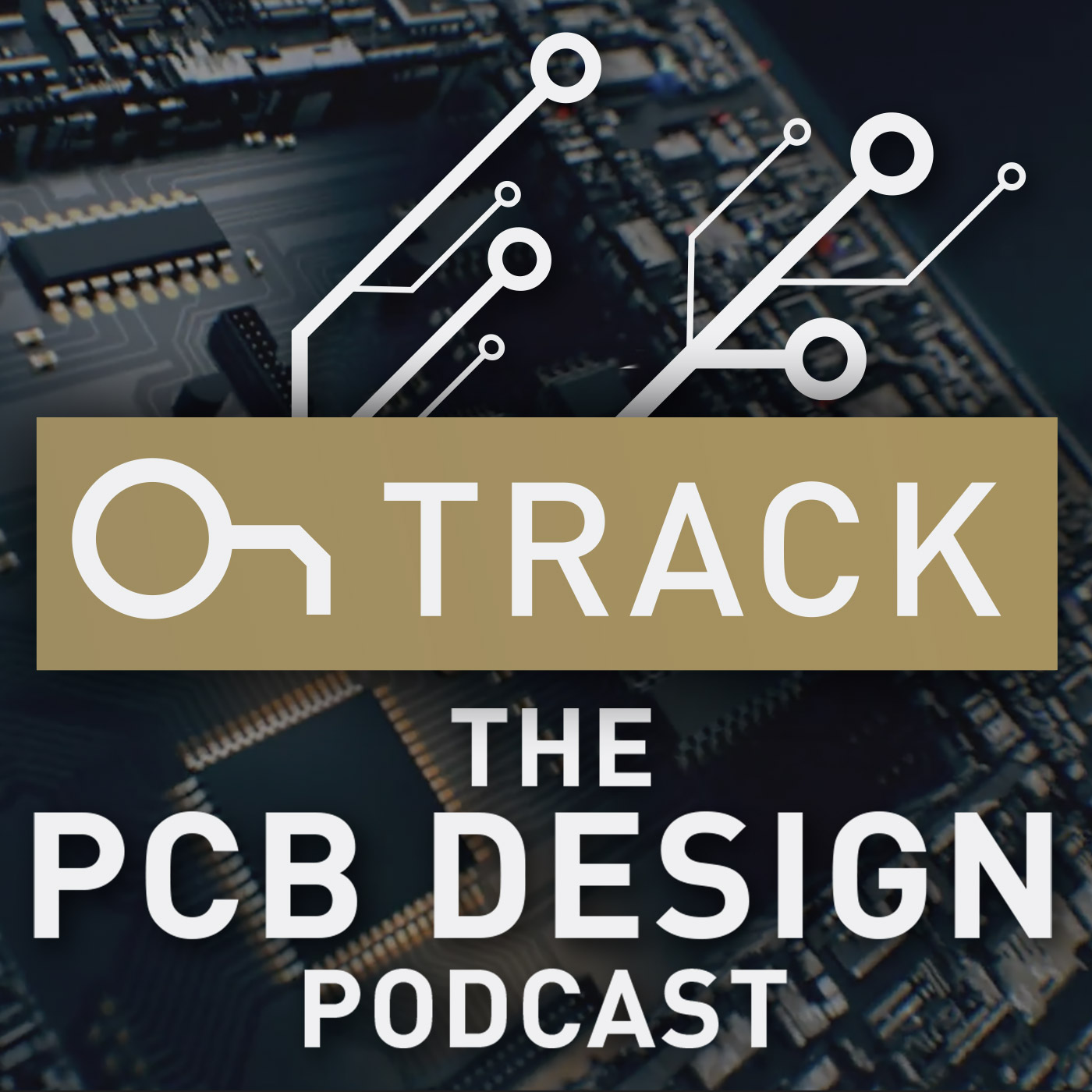Episodes
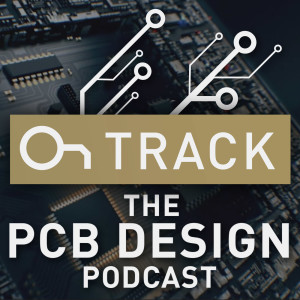
Wednesday Nov 13, 2024
E-Waste Crisis: How Component Sense is Making a Difference
Wednesday Nov 13, 2024
Wednesday Nov 13, 2024
Component Sense is tackling the e-waste crisis head-on by redistributing excess, unused stock from major companies before it becomes waste.
In this episode of the Altium OnTrack podcast, we talk with Kenny McGee, founder and CEO of Component Sense, about the hidden issues of electronic component disposal. Discover what happens to stockpiled electronics, why companies over-purchase components, and the innovative solutions that companies like Component Sense are implementing to reduce e-waste.
Kenny shares insights from years in the electronics distribution market, the challenges of moving unused inventory, and the environmental impacts of traditional disposal methods. This conversation highlights the importance of responsible component management and the potential to create a sustainable future in electronics. Tune in to learn more about the environmental and ethical implications of e-waste, and see how you can contribute to positive change in the industry.
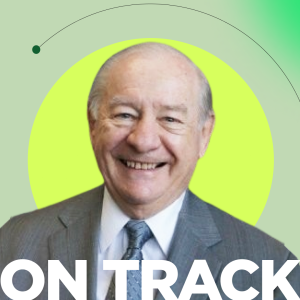
Tuesday Jan 09, 2024
Electronics Manufacturing in 2023: Mexico, India, & the Rise of UHDI
Tuesday Jan 09, 2024
Tuesday Jan 09, 2024
In a captivating 2023 year-end review, Zach Peterson hosts a compelling discussion with Gene Weiner, President of Weiner International Associates, exploring the dynamic landscapes of manufacturing in Mexico, India, and the burgeoning field of Ultra High-Density Interconnects (UHDI). Discover the nuances of electronics manufacturing in China, where resources seamlessly integrate into the supply chain, contrasted with Mexico's DIY approach and India's promising advancements fueled by resolutions and government backing, ultimately surpassing Mexico in certain aspects.
Key Highlights:
- Insights into Trade and Manufacturing in Mexico: Delve into the intricate details of Mexico's manufacturing landscape, exploring the unique challenges and opportunities in this key region.
- Exploring Broader Trends in India: Gain a comprehensive understanding of the evolving trends shaping the electronics manufacturing sector in India, highlighting key developments and advancements.
- Comparing India's Model to Chinese and Mexican Approaches: Analyze the positioning of India in the global manufacturing landscape, drawing parallels and distinctions between the Chinese and Mexican models.
- Unraveling the Challenges Faced by Chinese PCB Countries: Investigate the factors contributing to the challenges faced by Chinese PCB countries and the implications for the broader electronics manufacturing industry.
- Insights into M&A Activity and Future Trends: Explore the dynamics of mergers and acquisitions in the electronics manufacturing services (EMS) sector, with a forward-looking perspective on continued consolidation and vertical integration in the industry.

Friday Dec 08, 2023
Revolutionizing PCB Design with Altium’s 3D MID Tool
Friday Dec 08, 2023
Friday Dec 08, 2023
Explore the transformative world of 3D MID design in the OnTrack Podcast as Altium's Jack Henriques and Harting's Michael Mross discuss Altium's cutting-edge 3D routing tool. Gain insights into the vast potential of molded interconnect devices (MIDs) across industries and stay updated on the future of PCB design.

Tuesday Nov 28, 2023
Unlocking Collaboration: Altium’s New PCB CoDesign Tool in AD24
Tuesday Nov 28, 2023
Tuesday Nov 28, 2023
Dive into the future of collaborative PCB design with Altium's latest feature, the PCB CoDesign tool in AD24! In this exciting episode of the Altium OnTrack Podcast, our host, Zach Peterson, sits down with Wojciech Łaś, Product Manager at Altium, to explore the ins and outs of this innovative tool.
Discover how the PCB CoDesign tool allows multiple designers to work on the same PCB layout simultaneously, extending Altium's version control system. Learn about the compare and merge tool, a game-changer for detecting, comparing, and resolving conflicts in PCB layout files. Wojciech shares insights into the challenges of coordinating work among multiple designers and strategies to optimize the collaborative workflow.
Get a sneak peek into the future roadmap, including upcoming features like merge requests and improved conflict prevention. Find out how Altium's approach differs from real-time collaboration tools and the advantages of asynchronous collaboration.
Whether you're a seasoned Altium user or exploring the world of collaborative PCB design, this podcast provides valuable insights and a glimpse into the future of electronic design.
Show highlights:
- PCB CoDesigner Overview
- Unique Features of the PCB CoDesigner Tool
- Strategies for Collaborative Design
- Layer-Stack Locking and Rules System
- Future Developments: Merge Requests and On-Premise Availability
Links and Resources:
- Learn more about PCB CoDesign Coming Soon in Altium Designer 24
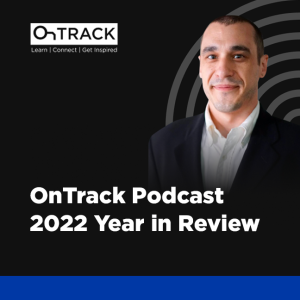
Tuesday Dec 27, 2022
OnTrack Podcast 2022 Year in Review
Tuesday Dec 27, 2022
Tuesday Dec 27, 2022
Join us as we reflect on the best moments and the coolest guests we've had on the OnTrack podcast this year. 2012 has been a whirlwind year for the electronics industry–chip shortages, and a supply chain crunch. Altium has passed several milestones, as well as releasing an education program. And there have been some groundbreaking reports from industry groups highlighting the need for workforce training and development, and workforce shortages coming on the horizon.
Claim the special offer for Podcast listeners only
Show Highlights:
- One of Altium’s Milestone is the Altium Education Program
- In most of the episodes, the issue of automotive chips shortage comes up coupled with the passing of the PCB Act
- PCB Packaging, and production of integrated circuit substrates
- Most requested repeat guests and new faces
Links and Resources:
- Watch all the OnTrack Podcast Episode
- Register at Altium Education for Free
- Connect with Zach on LinkedIn
- Visit Nexar website
- Visit Octopart website
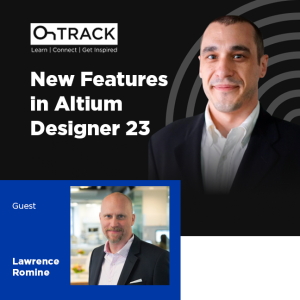
Tuesday Nov 15, 2022
Multi-board and Harness Design Capability in Altium Designer 23
Tuesday Nov 15, 2022
Tuesday Nov 15, 2022
It’s that time again to have Altium’s VP of Marketing, Lawrence Romine, the bearer of good news when it comes to Altium Designer’s latest features. We will discuss what’s coming in Altium Designer 23 which includes multi-board and harness design capabilities.
You don’t want to miss this one. Watch through the end and be sure to check the show notes and additional resources below.
Show Highlights
- Altium Designer®’s regular and reliable updates are incomparable in the industry, stay on top of the monthly updates through the OnTrack newsletter
- There are 3 major themes to come in Altium Designer 2023
- Multi-board systems and harness design – empower PCB designers and electrical engineers to design harnesses
- Collaboration and teamwork
- Make Altium Designer a necessity for every PCB designer – the world's greatest and most elegant design experience
- Code Designer, coming soon – the ability to work natively in Altium Designer and in Mcad tool of choice
- Multi-board and harness design capability, Altium Designer is fully supported through Altium 365
- It's never too soon to involve the other stakeholders in your PCB design
- Altium 365 releases commenting capability to both bombs and draftsman documents
- New power analysis capability powered by Keysight, anybody that can design a printed circuit board can now do some power analysis
- Altium Designer users are encouraged to check out all of the extensions, especially the new power analyzer
Links and Resources:
Connect with Lawrence Romine on LinkedIn
- Stay on top of Altium Designer versions updates
- What’s new in Altium 365
- Read: Come See the New Power Analyzer by Keysight in Altium Designer 22.9
- Connect with Zach on LinkedIn
- Visit Nexar website
- Visit Octopart website

Tuesday Sep 14, 2021
Software-Driven Hardware Development
Tuesday Sep 14, 2021
Tuesday Sep 14, 2021
Build and develop workflow in a "lightweight" way.
Kyle Dumont and Valentina Toll Villagra, the founders of AllSpice are passionate about taking hardware development to speed through the cloud. Their ultimate goal is to bring people together, bring the system together, and automate repetitive processes. Watch or listen on the go. You don't want to miss this.
Altium 365: Where the World Designs Electronics
Show Highlights:
- Introductions
- Kyle Dumont’s background in product development
- Valentina Toll Villagra background in Mechanical Engineering at Amazon -- machinery and logistics
- How Allspice got started?
- Kyle’s experience as an electrical engineer -- software principles applied to hardware
- Improve the product cycle
- Keeping up with the change in speed and expectations
- The need to build a dedicated and specific tool that will allow engineers to collaborate remotely
- Why the name ‘AllSpice’
- Software-driven Hardware Development: What do you mean??
- Hardware (HW) today is what Software (SW) was ten years ago (in-person design review)
- SW is having a growing influence on HW development
- Shared practices, tools, timelines, etc.
- Need for integrated development.
- Immediate application/solution: Component Shortages
- Replacing components takes more than updating a part number
- It’s more important than ever to validate components quickly and effectively.
- Our most successful customers use an 8-step process (read the blog post)
- BOM Check
- Identifying OOS components
- Finding a replacement
- Updating the component library, and the design
- Validating the component characteristics
- Verifying component footprints
- Checking for unintended changes - this is the one that gets you
- Releasing the updated design
- Providing flexible development infrastructure
- Moving things digitally--in the cloud
- Teams are more distributed (geographically and in terms of skills)
- Faster design cycles
- What’s driving faster design cycles?
- What is the impact? (New requirements/old tools and methods)
- AllSpice Hub features that we didn’t anticipate
- Where are we going...Continuous Integration, bring people together, bring the system together, and automate repetitive processes
Links and Resources:
Visit AllSpice Website
Kyle’s LinkedIn profile
Valentina’s LinkedIn profile
AllSpice’s LinkedIn page
Read the blog: Keeping up with the Chip Shortage
Demo design review
Full OnTrack Podcast Library
Altium Website
Download your Altium Designer Free Trial
Learn More about Altium Nexus
Altium 365: Where the World Designs Electronics
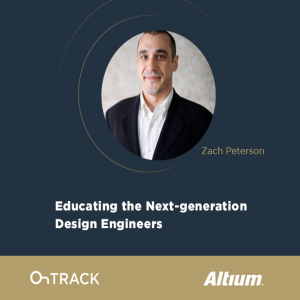
Tuesday Sep 07, 2021
State of PCB Design Education
Tuesday Sep 07, 2021
Tuesday Sep 07, 2021
In this episode, Altium’s Technical Consultant, Zach Peterson will share his insights about the availability and accessibility of education related to PCB design for high school and university students.
Zach will also talk about the inspiration behind “Design Secrets,” his new series available on Altium Academy Youtube Channel.
Altium 365: Where the World Designs Electronics
Show Highlights:
- Introduction, from academia and Ph.D. in Physics, how did he land in the world of PCB?
- On Altium Academy YouTube channel, Zach offers basic PCB design courses. that are not frequently available, even to professionals.
- Zach’s experience in university: Observations, Knowledge Gaps, what are the main focuses?
- Zach thoughts on why are PCB design courses are not the main focus of education in college and university
- The challenges in semiconductor industry
- Focus on digital and analog design
- Zach’s Industry “awakening”—noticed the “graying of PCB design expertise demographic”
- Industry Problems: De-siloing, systems-based thinking—tools, engineering and the rise of digitization
- Need for the industry to “step up” to help equip and prepare for next-gen engineers
- How can companies educate next-gen design engineers in an ecosystem-based context
- Industry de-siloing leads to educational de-siloing
- Zach and his company’s contribution to these efforts?
- Checkout Zach’s Blogs in Altium’s Resource hub
- What is Upverter education and watch for the future university content
- Altium full-time education team, free licenses, IPC, PCEA
Links and Resources:
Zachariah Peterson Video series on Altium Academy YouTube Channel
Upverter Education Website
Signal Integrity Journal--Zachariah Peterson Articles
How to Achieve Proper Grounding
#PCBeTheChange Design Contest | Upverter Education
Full OnTrack Podcast Library
Altium Website
Download your Altium Designer Free Trial
Learn More about Altium Nexus
Altium 365: Where the World Designs Electronics
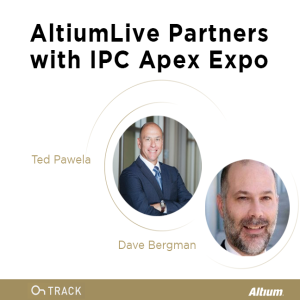
Tuesday Aug 24, 2021
AltiumLive Co-locates with IPC Apex Expo
Tuesday Aug 24, 2021
Tuesday Aug 24, 2021
AltiumLive 2022 and IPC Apex 2022 are joining forces to bring together all stakeholders in the PCB industry.
We have two executives joining us in this episode. Our very own Chief Ecosystem Officer and head of Altium Nexar, Ted Pawela; and IPC’s Vice President of Standards and Technology, Dave Bergman. They will share with us some exciting news about the most anticipated exhibits in the PCB community.
Altium 365: Where the World Designs Electronics
Show Highlights:
- Introductions:
- Ted Pawela, the Chief Ecosystem Officer and Head of Cloud (Nexar) Business Unit at Altium
- Dave Bergman, the Vice President Standards and Technology at IPC
- IPC and Altium Live conferences co-locate
- Uniting the stakeholders: PCB Design, PCB Manufacturing, PCB Supply Chain
- IPC leadership role in the industry— providing standards and educational foundation
- Bringing and exposing the PCB Designers to additional valuable education
- Dates of conferences and where overlap opportunities will be offered
- IPC Apex 2022: January 25th - 27th in San Diego with the theme “Digital Transcendence”
- AltiumLive 2022: January 26th - 28th in San Diego with the theme: “Connect”
- The intersection between the 2 conferences
- The relevance and synergies of ecosystems and community engagement
- Education strategies from Altium, IPC, and places of interest to intersect
- Understanding what’s beyond the tools
- Advancing the PCB designers’ careers through education
- IPC serves as a validation of the designers’ skills and talent through CID and CID+ training.
- IPC Foundation
- Why should you attend, what opportunities are there for you?
- User-centric
- Learn from the pure hard work of subject matter experts
- Improve design skills and connect with the people in the community
- Experience the biggest and the best, see you in January 2022
Links and Resources:
AltiumLive 2022 Website
IPC Apex Expo 2022
IPC CID Training (Eptac)
Altium Academy YouTube Channel
IPC Edge Educational Resources
Full OnTrack Podcast Library
Altium Website
Download your Altium Designer Free Trial
Learn More about Altium Nexus
Altium 365: Where the World Designs Electronics
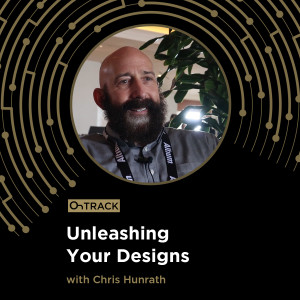
Tuesday May 18, 2021
Unleashing your High Density PCB Designs
Tuesday May 18, 2021
Tuesday May 18, 2021
Altium 365: Where the World Designs Electronics
Show Highlights:
- Understanding Semi Additive Process (SAP) and Modified Semi Additive Process (MSAP)
- MSAP isn’t new, but it’s growing to adoption, what’s driving that?
- What makes MSAP especially applicable now?
- Benefits of Laser Direct Imaging (LDI) for PCB designers and manufacturers
- What are the design implications and benefits? What exactly can you do with it?
- The methods/materials used for this technology?
- Chemical Technology, Averatec
- Ultra-thin copper, Insulectro
Links and Resources:
Insulectro Webinar on MSAP
Insulectro Website
(Insulectro Webinars Library available near the bottom of their homepage)
Chris Hunrath LinkedIn profile
Averatek Podcast on Additive Manufacturing
Altium 365: Where the World Designs Electronics
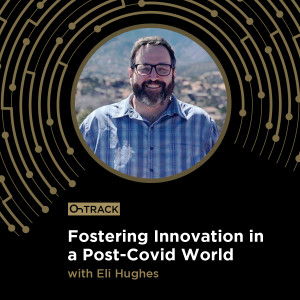
Thursday Jan 21, 2021
Fostering Innovation in a Post-Covid World
Thursday Jan 21, 2021
Thursday Jan 21, 2021
What’s in your soft skill toolbox? Eli Hughes is a true full-stack hardware engineer and a co-founder of Tzero Brew. He joins the OnTrack podcast to share his insights on how to foster innovation, manage upstream failure, build trust with your fellow engineers and stakeholders, and develop your soft skills—and other non-technical skills we use to communicate with each other and solve problems effectively.
Altium 365: Where the World Designs Electronics
Show Highlights:
- Intro to Eli
- Meeting the challenges of working remotely
- A lesson in engineering from a kindergartener
- ”Soft skills for hardware”; humanity in engineering
- Timing and Perception: Shifting targets as customer needs change
- Too easy to be negative; finding positivity in global challenges
- How constraints foster innovation
- Wants vs Needs: building trust with fellow developers
- Jeremy Blum’s take on ‘Empathic Engineering’
- You make it, you fix it: managing upstream failure
- Believing in the Mission: how ordinary people do extraordinary things
- The Part vs the Whole: Lee Ritchey’s homemade Apollo 11 boards
- Elon Musk & Tony Stark: the power of unification
- Expanding your sphere of influence by thinking holistically
- How students at TU Delft is helping paraplegics walk again
- Mining Sci-fi and fantasy reading for soft skills
- Now is the time: get out of your comfort zone!
Links and Resources:
Eli Hughes AltiumLive Presentation: Crossing the Chasm
AltiumLive 2020 Presentations
Jeremy Blum AltiumLive 2018: Empathic Engineering
OnTrack Insight with Lee Ritchey
Altium Stories: Project March (Exoskeleton)
Eric Bogatin Amazon Author Page
OnTrack Insight Videos
Article: 5 Essential Soft Skills for a Successful Career in Engineering
Altium 365: Where the World Designs Electronics
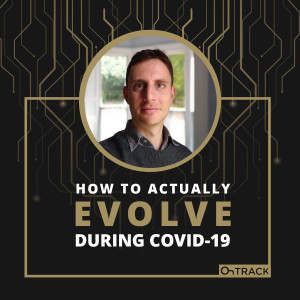
Tuesday Jul 14, 2020
How To Actually Evolve During COVID-19
Tuesday Jul 14, 2020
Tuesday Jul 14, 2020
Angus Thomson is Senior Electronic Engineer and founder of CircuitBuilder, a brand new platform for simplifying the development of custom electronics out of Suffolk, England. Angus joins the OnTrack Podcast to share his experiences as CircuitBuilder’s founder, and to discuss the fine points of CircuitBuilder’s evolving business model, which has so far proven immune to the challenges of the global pandemic.
Altium 365 Podcast Listener Discount
Show Highlights
- Introduction to Angus Thomson
- ”I thought: there’s a better way to do this”—Angus’ road to entrepreneurship
- How CircuitBuilder utilizes Altium 365 to provide customers with realtime 3D views of their designs
- The CircuitBuilder growing network of engineers
- CircuitBuilder’s successful, lightweight recruitment process
- Proving it out in your own backyard: Angus on expanding market reach
- Transparency: How Altium 365 pushes CircuitBuilder beyond the errors of the past
- Design, Manufacture, or both? CircuitBuilder’s evolving business model
- The secret of CircuitBuilder’s resilience during the coronavirus health crisis
- Angus offers his insight on the future of design in a post COVID-19 world, and on CircuitBuilder’s role in that future
Resources:
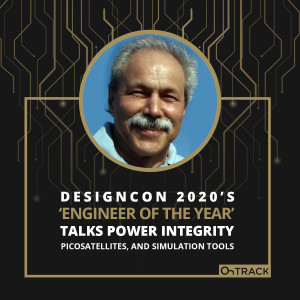
Tuesday Jul 07, 2020
Tuesday Jul 07, 2020
Istvan Novak, Principal Signal and Power Integrity Engineer for Samtec Inc. and winner of the DesignCon 2020 Engineer of the Year Award joins the OnTrack podcast to talk picosatellites, simulation tools, and the rising importance of power integrity.
Altium 365 Podcast Listener Discount
Show Highlights
- Introduction to Istvan Novak
- A brief look at Samtec Inc., the successful computer equipment manufacturing company headquartered in Indiana.
- Istvan’s path to becoming a Power Integrity expert
- CubeSats and the students who make them
- The challenges of dimensionality: has power integrity become more important than signal integrity?
- When Power Integrity is an afterthought
- The value of expert disagreement
- “Regardless of what we want to simulate, we can find good simulation tools to do it”: Good design and the challenges of modeling and simulation
- Closing thoughts; the first working Picosatellite; and the first electrosmog map of the globe
Resources:
- Istvan Novak on LinkedIn
- Samtec: gEEk spEEk SI Webinars.
- Samtec Silicon-to-Silcon Solutions Website
- The SI-List Archives
- Istvan Novak: DesignCon 2020 Engineer of the Year Award
- BUDAPEST UNIVERSITY OF TECHNOLOGY AND ECONOMICS Picosatellite
- Istvan Novak’s Electrical Integrity Website
- Picotest Website
- Signal Integrity Journal
- Design 007 Magazine, See pg. 38 Do You Really Need That Ferrite Bead in the PDN?
- First Electrosmog Map of the globe
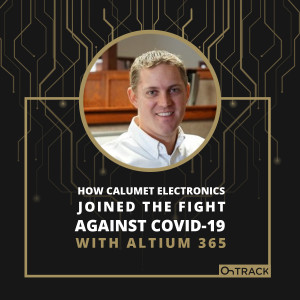
Tuesday Jun 23, 2020
How Calumet Electronics Joined the Fight Against COVID-19 With Altium 365
Tuesday Jun 23, 2020
Tuesday Jun 23, 2020
The town of Calumet, with a population of barely seven-hundred, was once the booming epicenter of Michigan’s upper peninsula mining industry. When the industry began to fail, unemployment skyrocketed, and the townspeople sought local solutions for creating jobs that could sustain the town’s families.
Rob Cooke, Director of Engineering Services at Calumet Electronics Corp, joins the OnTrack podcast to discuss the Open Source Ventilator project, his experiences implementing Altium-365, and the radical decision business owners in that small town of Calumet, Michigan made more than 50 years ago, which led to the rise of Calumet Electronics Corp.
Altium 365 Podcast Listener Discount
Show Highlights
- Intro to Rob Cooke: how he got involved with Dugan Karnazes and the Open Source Ventilator Project.
- From copper ore to copper pours: Calumet, Michigan’s fascinating backstory.
- So what’s the hold-up? The right tool for avoiding excessive holds and other barriers to expedient design.
- Reality transcends the map: Altium-365 demos vs firsthand experience.
- The impact and implications of sudden hyper-efficiency at the designer, fabricator, and assembler level.
- The shock of realtime: “This is what can happen when things don’t go on hold!”
- Rob offers some final thoughts on the purchasing and quoting paradigm.
Resources:
- Rob Cooke on LinkedIn
- Calumet Website
- Open Source Ventilator Video
- AltiumLive 365 Demo
- Altium 365 product page
- Open Source Ventilator Project (OSV) Combats Ventilator Shortage
- Previous Episode with Rob Cooke: How to Conquer Data Package Problems
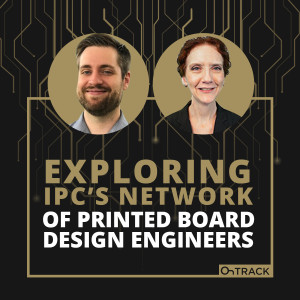
Wednesday Jun 03, 2020
Exploring IPC’s Network of Printed Board Design Engineers
Wednesday Jun 03, 2020
Wednesday Jun 03, 2020
The renowned global trade association known as IPC has put together a network of printed board design engineering affiliates under the name IPC Design. IPC Design’s affiliates are comprised of PCB design engineers across the globe who are working to advance the art and science of printed design engineering.
IPC Design’s Patrick Crawford and Teresa Rowe join the OnTrack Podcast
Work from Anywhere. Connect with Anyone.
Show Highlights
- What is IPC Design, and what is its primary mission?
- Increased global presence and participation: How IPC is molding its future.
- IPC Design’s worldwide buy-in, its fresh new participants, and how the quarantine has affected participation.
- Has productivity gone up since quarantine?
- Lessons in remote working and the importance of taking time for yourself.
- Between January 2020 and now.
- What’s in store for the future: IPC’s collaborative content model.
- America, Europe, and Asia: IPC’s leadership group and global design committee.
- IPC Design is looking to fill a leadership role in Asia.
- What’s in it for you, the designer? Teresa and Patrick count the ways designers will benefit from IPC Design.
- ”Let’s start up a chapter!”: How individuals, student groups, and companies can get affiliated with IPC Design.
- Translators of the world, connect! How IPC Design can serve and collaborate with STEM groups all over the globe.
Resources:
Teresa Rowe on LinkedIn
Patrick Crawford on LinkedIn
IPC Website
Link to IPC Design webpage
Link to IPC Design enrollment page
Patrick Crawford’s video presentation on IPC Design
Realtime with IPC
IPC CEO John Mitchell on the Impact of COVID-19 on the Electronics Supply Chain
Work from Anywhere. Connect with Anyone.
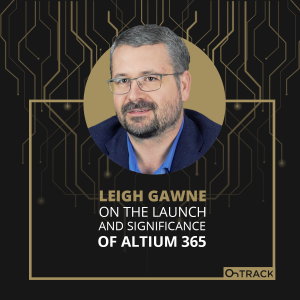
Sunday May 10, 2020
Leigh Gawne on the Launch and Significance of Altium 365
Sunday May 10, 2020
Sunday May 10, 2020
Work from Anywhere. Connect with Anyone.
Altium 365 is here, and its CAD-aware approach to cloud-based design is already cutting lead times down by orders of magnitude. How will this affect designers, and how will it affect the electronics industry as a whole? Leigh Gawne, Chief Software Architect at Altium 365, answers these questions and more. Get an exclusive look inside the impact Altium 365 is having on the electronics industry and learn more about this powerful new tool.
Show Highlights:
- Up until this point, ECAD has been confined to the desktop. Leigh explains how Altium 365 breaks this trend, allowing anyone with an internet-enabled device to interact and collaborate in the design process—directly from a web browser.
- No download necessary: Altium 365 ditches the software download for manufacturers and other stakeholders.
- Is the Google Drive comparison accurate? Leigh demonstrates how Altium 365’s approach to ‘CAD-awareness’ pushes its capabilities far beyond the reach of ordinary cloud-based design tools.
- Is this design manufacturable? Resolving essential questions with the click of a button in Altium 365, allowing designers to instantly share designs as a live view or as a snapshot.
- Never lose a comment thread again. Leigh explains how Altium 365’s ‘contextual commenting’ feature allows designers to attach comment threads right to relevant features in the design.
- Customers, procurement personnel, and project management: How Altium 365 facilitates seamless interaction with secondary stakeholders.
- Altium 365’s option for browser-driven design review minimizes mistakes and pulls more stakeholders into the chain.
- Supply chains are dynamic and are often subject to radical, unexpected changes, especially in a pandemic. Leigh breaks down Altium 365’s “baked-in” Octopart capability, which allows designers to monitor their supply chains in real-time.
- Navigating the ‘new normal’: Leigh examines Altium 365’s important and powerful role for product design in the post-coronavirus age.
- Out the door in 30 days: Reviewing Altium 365’s integral role in the Open Source Ventilator Project’s incredible success story.
- Success all around: How Altium 365 makes it trivial to duplicate another company’s achievements.
- Leigh looks at the future of the electronics in the wake of this powerful new tool.
Links and Resources:
Exclusive Sharable Listener Discount Link
Altium Designer-Altium 365
Altium 365 Customer Stories Videos: Skyship, Arduino, Project March
Altium 365 Webpage
Altium 365 LIVE Demo from AltiumLive 2019 with Leigh Gawne
Open Source Ventilator Podcast with Dugan Karnazes
Now you can get the ultimate PCB design productivity with the easiest platform for PCB design. Easily communicate design changes to your team with Altium 365.
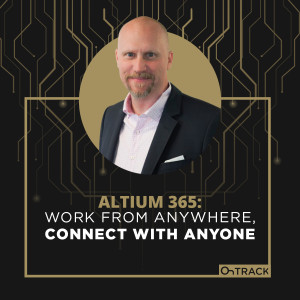
Tuesday May 05, 2020
Altium 365: Work from Anywhere, Connect with Anyone
Tuesday May 05, 2020
Tuesday May 05, 2020
Altium 365 has launched in the midst of a worldwide quarantine effort—a time when companies have drastically reduced the in-office workforce, and financial constraints and travel restrictions have never been tighter.
Altium’s VP of marketing, Lawrence Romine, joins the OnTrack Podcast to explain how Altium 365 removes the obstacles presented by the lockdown effort, why it’s the perfect tool for the post-coronavirus environment, and how the launch timing couldn’t be more serendipitous.
Work from Anywhere. Connect with Anyone.
Show Highlights:
- Altium 365 has launched on schedule; a brief look at why the timing couldn’t be more perfect.
- Working remotely. The Altium 365 cloud based platform which Altium Designer and Concord Pro run on.
- Seamless integration: the symbiotic relationship between Altium Designer and Altium 365.
- Arduino, SkyShips, and you: the various types of Altium 365 users, and how the addition of new features addresses their individual needs.
- Flattening the curve: Altium’s conscientious approach to the learning curve when adding new features.
- Design Reviews in a pandemic—a use case: How Altium 365 removes the obstacles presented by a remote work environment.
- Some users describe the experience of Altium 365’s cloud-based real-time collaboration as “similar to working in Google Docs”. Lawrence elaborates.
- It’s as easy as sending a link: How Altium 365 frees up budgets by eliminating excessive travel, phone calls, and emails.
- “Simplicity is the ultimate expression of sophistication”: Lawrence recalls an automotive experience from his life in praise of Altium 365’s design ethic.
- As simple as using a web browser: How sales personnel are utilizing Altium 365 as a demonstration tool for prospective clients.
- Lawrence’s predictions about the farside of the COVID-19 calamity.
Links and Resources:
Exclusive Sharable Listener Discount Link
Altium Designer-Altium 365
Altium 365 Customer Stories Videos: Skyship, Arduino, Project March
Altium 365 Webpage
AltiumLive: Altium 365
Altium 365 Security
Now you can get the ultimate PCB design productivity with the easiest platform for PCB design. Easily communicate design changes to your team with Altium 365.
Work from Anywhere. Connect with Anyone.
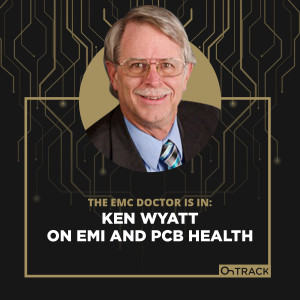
Tuesday Apr 14, 2020
The EMC Doctor is in: Ken Wyatt on EMI and PCB Health
Tuesday Apr 14, 2020
Tuesday Apr 14, 2020
The OnTrack Podcast is pleased to welcome Ken Wyatt (also known as the ‘EMC Doctor’). Ken began his career as a designer in the aerospace industry, and later worked for Hewlett Packard, where he found that his background in RF and Microwave engineering helped prepare him for his role as an Electromagnetic Compatibility (EMC) Engineer. His work has since taken him all over the world, where he develops and provides in-house training and delivers presentations and live demonstration; definitely unique among presenters!
Retiring early in 2008, Ken has since become a prolific author, co-authoring three books, including his latest, in which he identifies why products fail to meet EMI/EMC regulatory standards: ‘EMI Troubleshooting Cookbook for Product Designers’.
Ken currently provides seminars on a variety of EMC related topics—touching on subjects not often taught at the university level. He also provides EMC consultation, EMC compliance and precompliance testing, design reviews, and training services for commercial, military/aerospace, scientific, consumer, and computing industry sectors.
See What's New in Altium Designer
Show Highlights
- Ken lays out his career path, from his beginnings in the aerospace industry, to his current role as a consultant.
- ‘EMI Troubleshooting Cookbook for Product Designers’—a quick look at the book Ken co-authored with Patrick G. André.
- Addressing the prevailing trends in stackups and board design in general.
- Old habits die hard: Why the PCB is the heart of most EMI and EMC issues today, and pitfalls to avoid to move past these issues.
- Signals as the flow of electrons in copper traces and wires: How our education may have left out the whole story with respect to high frequency design.
- How simultaneous trends toward diminishing device size and the Internet of Things contributes to desensing and other issues on PCBs.
- Staying “in the know”: Keeping up with our evolving understanding of the physics of PC boards and signal propagation is always challenging. Ken lays out some ways designers can stay up to speed.
- Why Electromagnetic Compability programs at the university level are few and far between, and how Missouri University of Science and Technology stands out among them.
- Case Studies: The trouble with dog trackers and blood transfusion machines. Ken discusses some challenges he’s come across in the field.
Resources:
Short video on the book with co-author Patrick André
Ken Wyatt on Twitter: @emc_guru
See What's New in Altium Designer

Wednesday Jul 24, 2019
Robert Feranec on How to Implement The PCB Design Process
Wednesday Jul 24, 2019
Wednesday Jul 24, 2019
In this episode we talk with Robert Feranec, a familiar name to many of our listeners. Apart from being a popular YouTuber, he’s also the founder and CEO of FEDEVEL Academy where he teaches PCB Design to people around the world. Robert shares what it takes to be a popular YouTuber, the work it takes to produce all the great content he creates and as a special bonus we’ll discuss Robert’s Keynote that he will deliver at AltiumLive PCB Summit this October in San Diego.
Show Highlights:
- Robert considers himself lucky to have started working on complex boards almost immediately after university. This early start provided much experience and he soon began freelancing.
- As a freelancer, he did whole-board design i.e. specifications, schematics, layout, as well as testing and firmware.
- He found he often couldn’t remember everything when using Altium Designer® and started doing YouTube videos, at first for himself, but soon garnered a following and today he has 24 000 followers.
- As he became more popular, he received many email questions daily, which was very time consuming and he decided to create a forum where he offered a course, and the rest is history. Robert teaches Altium Designer but also CAD-independent content.
- What goes into creating a video tutorial? Lots of preparation, a half-hour video takes almost two days to create. One hour of video training takes a week to create.
- AltiumLive Topic: How Other Companies Implement Their Hardware Design Process. Many people ask about how other companies implement hardware design, create and use libraries, collaboration (design flow) and working faster.
- Why do so many people only use a small percentage of their tool’s capacity? Most don’t need all the features. Many are nice to have but not always a necessity. Also, people learn to use the tool in a specific way and adding new features could interfere with an established workflow.
- Robert’s talk at AltiumLive will provide insight into libraries, creating new components, component lifecycle, creating new symbols as quickly as possible, ensuring correct footprints, and more.
- What are the challenges around collaboration? Communication between different types of engineers and how to manage several engineers working on the same project.
- What about versioning and backup? Most companies will do both in the same way.
- Document releases are very complex, there are too many emails back and forth. Robert will talk about ensuring correct documentation and release procedures.
- What attracts people to your training? The different levels of the courses, the variety, and junior designers love them to upskill and get better jobs.
Links and Resources:

Tuesday Feb 19, 2019
Am I Big Enough for Data Management?
Tuesday Feb 19, 2019
Tuesday Feb 19, 2019
In this episode of the OnTrack Podcast we echo the style of “Ask me Anything” and feature Ben Jordan and Judy Warner who will mine the AltiumLive forum for questions. Ben will answer your questions about Engineering and PCB Design and Judy will respond to topics related to manufacturing and supply chain. Join us today as we tackle the question: If we have only one or two EEs, do we really need data management?
For future episodes, you can submit your questions on the AltiumLive forum, and sign up to be part of the community. Or email your questions directly to us.
Watch the video here.
Show Highlights:
- The Lounge is where the community talks about interesting topics related to PCB Design and Electronics Engineering, not necessarily only Altium products.
- Today’s question from the lounge is: “Is the Altium Vault really worthwhile in a company with just two EEs??” Perhaps another way to pose this question is: is it worth having a formal data management system for your electronics design, if you’re only a small business? We could even ask, is it worthwhile for an individual design contractor? The short answer is: Absolutely!
- Statistics and analytics from webinars, show that 80% of designers do not even use a formal version control system.
- A version control system allows you to have a central location for storing data, and as you work and make edits, and save files; it must be committed to the system as a revision.
- Version control allows you to go back to any point in time and restore it. Also, it allows comparison changes, in context, in a team or if you’re an individual designer.
- A normal backup system does not give you associativity between that moment in time and what you were doing, or the engineering intent.
- A version control system is not a formal data management system: it doesn’t give lifecycle management or links to supply chain data.
- A true data management system would not permit release unless everything is saved, committed to version control and contains the latest revision. Including in the component library.
- Provides accountability in the way you use and store your data.
- What are some problems with footprints in manufacturing?
- Panelization, v-cut, scoring for breakaway tabs etcetera, not following procedure.
- Slow down to hurry up - spend time upfront to set up the system, then you can move faster.
- Documentation is essential in the industry for re-use and provides a lifecycle.
- Data management keeps you accountable.
Links and Resources:
Join AltiumLive forum, and check out The Lounge
OP’s original question and related question
Email new questions to: OnTrack@altium.com

